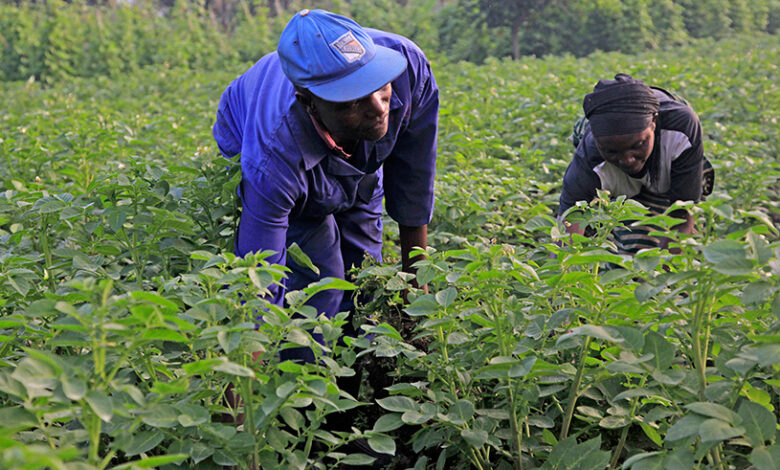Rwanda: Could Farm Service Centres End Delays in Agro-Inputs Distribution?

Officials in Gatsibo District have assured farmers that they are addressing delays in distribution of agro-inputs and improved access to improved agro-inputs in Eastern Province following the establishment of a Rwf325m farm service centre.
The Rwf325 million one-stop Farm Service Center in Kabarore sector offers farm inputs, animal feeds and training services to smallholder farmers.
Jean Leonard Sekanyange, The Vice mayor in-charge of Economic Development in Gatsibo District said that the center is expected to end farmers’ woes related to the delay in agro-inputs delivery considering that they used to spend long journey seeking fertilizers, seeds and other agro-chemicals in remote areas.
“The centre will also train farmers on good agricultural practices and increase productivity, the move which will improve food security and help farmers get extra harvest to supply the market,” he said.
He said that the farm service centre was set up in Gatsibo District as a strategic area to supply agro-inputs to Kayonza and Nyagatare districts adding that other districts in Eastern Province can also access the centre.
The centre dubbed “AGRAH CARE Farm Service Center” was established under the support of Rwanda Agriculture and Animal Resources Development Board and USAID-funded Hinga Weze Project.
François Xavier Rugerinyange, one of agro-dealers in Gatsibo District said that he was incurring huge costs in purchasing and transporting agro-inputs from Kigali city to Eastern province.
“The transport cost was very high and this increase used to trigger an increase in agro-inputs prices. The situation would also cause delay in timely delivery of seeds and fertilizers and miss the market from farmers or farmers who buy them could also delay planting on time,” he said.
The Head of the Farm Service Centre, Jeanne Nyaruyonga, said that the centre will ensure affordable agro-inputs prices.
She said that the centre with nine workers is expected to recruit eight workers in 2022 as a way of improving outreach to farmers and agro-dealers in different areas of Eastern province.
Laurence Mukamana, the Chief of Party at Feed the Future Rwanda-Hinga Weze Project said that The centre is one of the one-stop Farm Service Centres that target to earn Rwf1.4 billion ($1,374,621) in annual sales from agro-inputs and livestock feeds and offer training services to 50,500 farmers in six districts.
The six Farm Service Centre are located in the districts of Nyabihu, Karongi, Ngororero, Bugesera, Gatsibo and Nyamagabe.
The centres are part of $32.6 million project that, by 2022, seeks to improve over 530,000 smallholder farmers’ income, nutritional status of women and children , and increase farmers’ resilience to a changing climate with quality seeds and fertilizers and others in 10 target districts namely Bugesera, Gatsibo, Kayonza, and Ngoma (Eastern Province), Karongi, Ngororero, Nyabihu, Nyamasheke, and Rutsiro (Western Province), and Nyamagabe (Southern Province).
Agro-inputs access for smallholder farmers in the country
According to the Africa seed Access index, the annual seasonal agricultural surveys carried out between 2017 and 2021 reveal that the informal seed system is still the main source of seed for small- scale farmers, the report shows.
However, it notes that over this period the percentage of small-scale and large-scale farmers using improved seed has increased steadily in the main cropping season (Season A).
The report notes that the percentage of small-scale farmers using improved seed has increased from six per cent in 2017 to 36 per cent in 2021 in Rwanda.
The report notes that the proportion of large-scale farmers using improved seed has also increased from 52 per cent in 2017 to 89 per cent in 2021.
It shows that satisfaction with seeds increased for maize, bean, and wheat from 75 per cent and 77 per cent to 82 per cent and 92 per cent respectively.
Satisfaction with the availability of basic seed for soya bean was excellent in both years with 87 per cent.
In terms of fertilizers access and uptake, the government seeks to increase the use to 75 Kilogrammes per hectare by 2024 as the uptake is currently around 46 Kilogrammes as of 2020.







